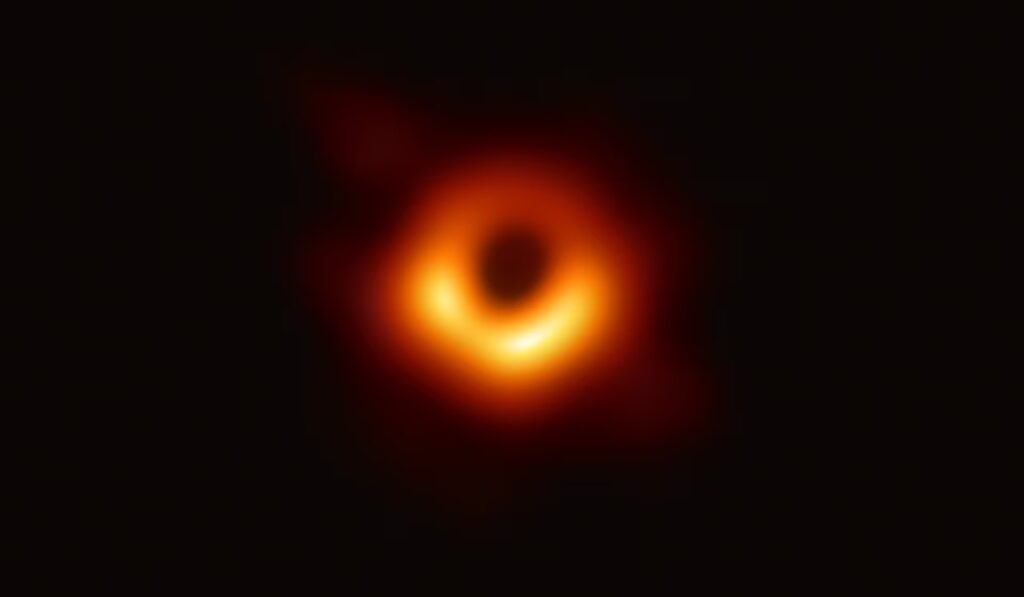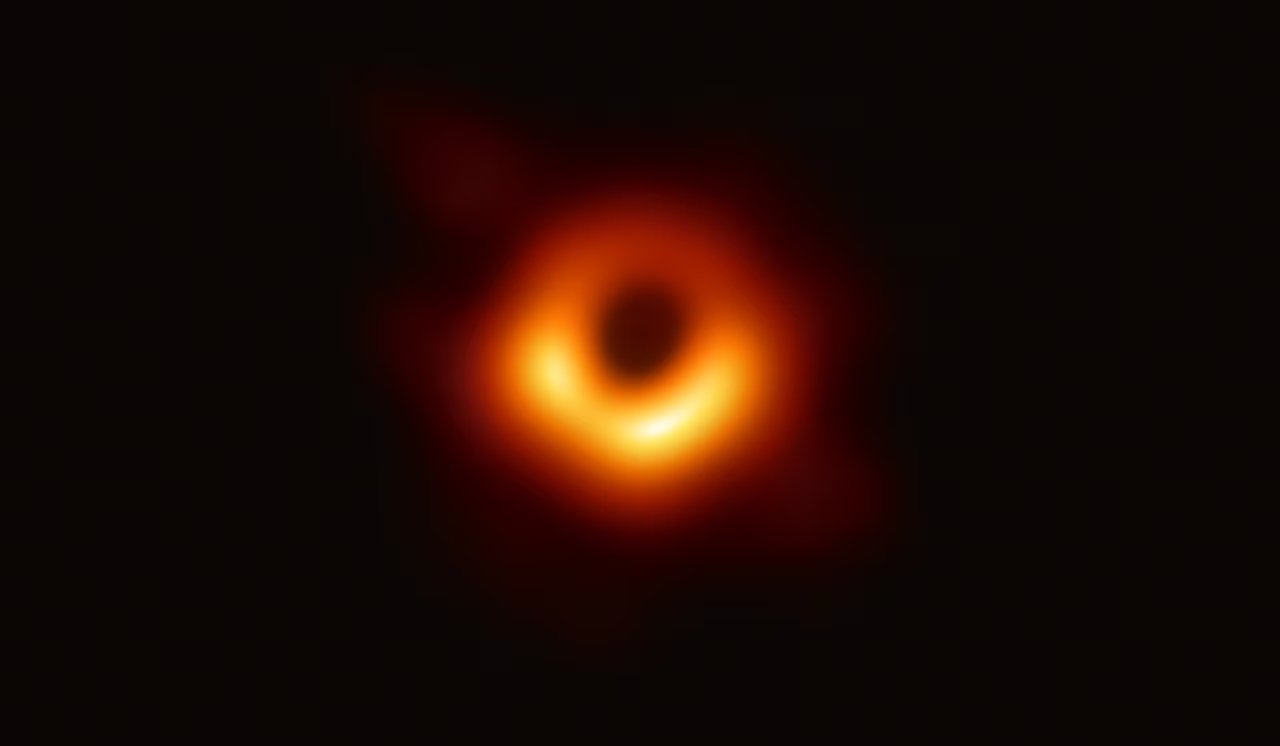Top 10 Interesting and Strange Facts About Black Holes
Among the universe’s most intriguing and enigmatic things are black holes. They still have a lot of mysteries, even if we now know a lot about them. Let’s explore some odd and undiscovered truths about these cosmic riddles.

1. Black Holes Come in Different Sizes
When we think of black holes, we often imagine massive, all-consuming objects. However, black holes vary dramatically in size. The smallest are the “primordial” black holes, theorized to have formed shortly after the Big Bang. These could be smaller than an atom, yet still incredibly dense. At the other end of the spectrum, there are supermassive black holes that can weigh billions of times more than the Sun. Most galaxies, including our own Milky Way, host supermassive black holes at their centers, such as Sagittarius A*, a black hole roughly 4 million times the mass of our Sun.
In between these two extremes, we have stellar-mass black holes, which form from collapsing stars. These range from around three to a few dozen times the mass of the Sun. The vast range of sizes tells us that black holes may have diverse origins and processes that shape them.
2. Time Slows Down Near Black Holes
One of the most mind-bending aspects of black holes involves their impact on time. According to Einstein’s theory of General Relativity, time slows down near a massive object. For a black hole, with its intense gravitational pull, this effect is extreme. If you were to hover just outside a black hole’s event horizon (the point of no return), time would appear to pass much slower for you relative to someone far away from it.
This effect is known as gravitational time dilation. From an outside observer’s perspective, someone falling into a black hole would seem to slow down and freeze just before crossing the event horizon. For the person falling in, however, time would seem normal, though they’d be racing towards their inevitable fate. This phenomenon challenges our fundamental understanding of time and space.
3. They Can Emit Powerful Jets of Energy
Although black holes themselves don’t emit light, they’re often surrounded by material that emits vast amounts of energy. As matter is pulled towards a black hole, it forms an “accretion disk” around the event horizon, heating up to extreme temperatures and emitting radiation. Some black holes also produce powerful jets of particles that shoot out at nearly the speed of light. These jets can extend for thousands of light-years, affecting entire galaxies.
Scientists believe these jets are formed by magnetic fields around the black hole, combined with the energy released as matter accelerates toward the event horizon. These emissions are so strong that they can be observed across vast cosmic distances, providing us with valuable insights into the behavior of black holes and their effects on surrounding space.
4. Black Holes Can Merge and Form Even Bigger Black Holes
When two black holes come close enough, they can merge, creating a larger black hole. This cosmic collision releases massive amounts of energy in the form of gravitational waves – ripples in spacetime that were predicted by Einstein and first detected in 2015 by the LIGO observatory. The merger of black holes is an awe-inspiring event, with waves traveling across the universe, carrying information about these cataclysmic encounters.
Each detected gravitational wave provides valuable data about the masses and spin of the merging black holes, giving us a better understanding of their properties and frequency in the universe. These events also suggest that black holes may continue to grow over time, merging with one another to reach unimaginable sizes.
5. Some Black Holes May Be “Naked Singularities”
In theoretical physics, a “singularity” is a point of infinite density, which is thought to exist at the core of every black hole. However, it’s generally hidden behind the event horizon, the boundary beyond which nothing can escape. A “naked singularity” is a hypothetical singularity without an event horizon, which means it would be visible to the outside universe. This possibility is controversial and challenges our understanding of physics, as it could expose us to unpredictable gravitational effects.
Physicists have debated whether naked singularities can actually exist in nature or if they are just a mathematical possibility. If they do exist, they could provide direct insights into the laws of gravity and spacetime. However, so far, there’s no experimental evidence for naked singularities, and they remain a fascinating mystery in theoretical astrophysics.
6. They Could Potentially Be Gateways to Other Universes
The idea that black holes could serve as portals to other universes has fascinated scientists and science fiction enthusiasts alike. According to certain solutions in Einstein’s equations, black holes might connect to “white holes,” hypothetical objects that emit matter instead of absorbing it. Together, these black and white holes could theoretically form a “wormhole” – a shortcut between distant points in space or even between different universes.
While this idea remains speculative, recent advancements in theoretical physics have shown that wormholes might be possible under certain conditions. However, traversing a black hole to another universe, if even possible, would require surviving extreme gravitational forces, a feat well beyond our current technological capabilities.
7. They Can Have a Ring of Light Called the Photon Sphere
Around every black hole is a region called the photon sphere, where gravity is so strong that photons (particles of light) are forced to orbit the black hole. In theory, if you could safely reach this region, you’d see the back of your own head due to the curvature of spacetime. The photon sphere represents a strange boundary where light can orbit the black hole in a perfect loop, creating a ring of light around the black hole.
The photon sphere was famously captured in the first-ever image of a black hole in 2019 by the Event Horizon Telescope. The image of the supermassive black hole in the galaxy M87 showed a glowing ring of material around its shadow – evidence of the intense gravitational forces bending light.
8. Not All Black Holes Are Black
While we think of black holes as dark objects, they can emit visible and invisible radiation when they’re actively consuming material. This process, called accretion, heats surrounding gas and dust to high temperatures, producing intense X-ray emissions. In fact, X-ray observatories often detect black holes by spotting these energetic emissions from their accretion disks.
Some black holes, known as “quasars,” emit so much energy that they outshine entire galaxies. These active black holes give us a rare chance to study them, as their intense radiation can be detected from millions of light-years away. Quasars were among the first evidence that black holes existed, providing early clues to these mysterious objects.
9. They Can Evaporate Over Time
One of the most intriguing discoveries about black holes is that they may not last forever. According to Stephen Hawking, black holes emit tiny amounts of radiation over time, a phenomenon now known as “Hawking radiation.” This process allows black holes to lose mass gradually, causing them to shrink. For large black holes, this process is extremely slow, but for smaller black holes, it could lead to their eventual evaporation.
If a black hole is isolated and stops consuming material, it might eventually vanish completely over trillions of years. This concept raises questions about the fate of black holes and the ultimate destiny of matter and energy in the universe.
10. The Information Paradox Remains Unsolved
One of the most puzzling mysteries in black hole physics is the information paradox. According to quantum mechanics, information about particles can’t be destroyed, but when something falls into a black hole, it seems to disappear forever. This contradicts one of the core principles of physics, as it implies that the information is irretrievably lost when an object crosses the event horizon.
Physicists have debated possible solutions to this paradox, proposing ideas like the “holographic principle” and “firewalls,” but no consensus has been reached. Solving the information paradox could lead to a major breakthrough in our understanding of the universe, potentially uniting the laws of quantum mechanics and general relativity.


